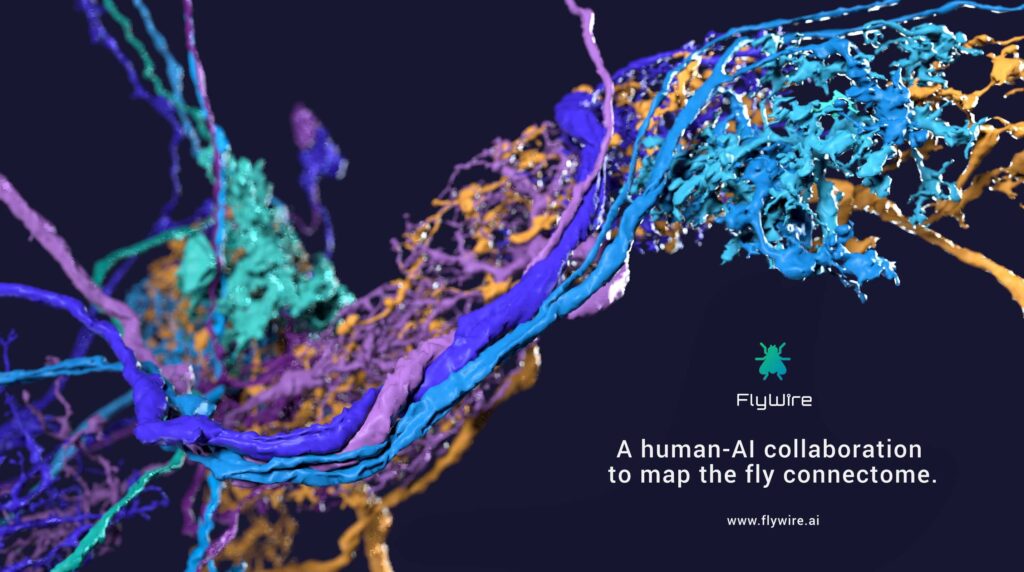FlyWire is a game-like platform open to all, to help crowdsource the first complete wiring diagram of a centralized brain. In a fruit fly brain sliced and imaged by electron microscopy (Zheng et al. 2018), we identified pieces of neurons by artificial intelligence (Dorkenwald et al. 2021). Players search for the right pieces and put together beautiful 3D neurons that advance science’s understanding of brain circuits.

Scientific Background
While genetic and neural circuit tools for Drosophila neurobiology research have advanced at a great pace over the past decade, we still lack a connectome of the adult Drosophila brain. Wiring diagrams at single-synapse resolution are highly desirable for analyses of circuit architecture and function. Using a serial section electron microscopy (EM) dataset of a full female adult fly brain (“FAFB”) (Zheng et al. 2018) produced at Janelia Research Campus, we (the Seung and Murthy labs at Princeton) have developed a machine learning-based segmentation that delivers large segments of neurons automatically. Large segments accelerate human proofreading of the automated reconstruction, and are made possible in part by high-quality alignment of images prior to segmentation. FlyWire.ai provides a platform for humans to proofread the AI-generated cell segments to produce complete neurons and circuits. The basic workflow is that fragments of neurons reconstructed by AI are merged together by human proofreaders like you, to create complete neurons. Besides merging, splitting is also often required, in cases where the AI joined two cells by mistake.
Images were originally collected with an XY resolution of 4 by 4 nm, but have been downsampled here by a factor of two to be 8 by 8 nm. Sections are approximately 40 nm thick in Z.
Datasets
Sandbox: A practice dataset. Cell edits are visible to all, but user mistakes don’t matter here. All users have automatic access. If you don’t see colored neurons in the 3D view, please check our FAQ.
Production: The “real” dataset, accessible only after passing a proofreading proficiency test. Cell edits all contribute to one high quality dataset used for science.
Contact us with questions, ideas or comments:
Scientific users: flywire@princeton.edu
Citizen science: flywire@eyewire.org